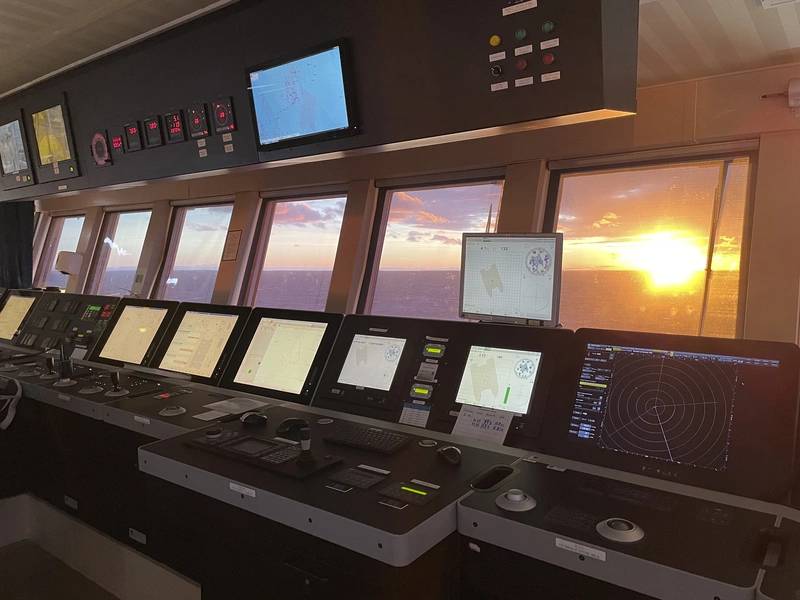Morten Firing, Operations Manager, Global Customer Support Offshore & LNG, Kongsberg Maritime
February 27, 2021How teamwork between COSL Drilling and key suppliers Kongsberg and NOV has improved on previously record low emissions to deliver fuel and environmental savings of more than 25%.
In 2020, after several years of developing energy-efficient drilling operations, a team at COSL Drilling Europe AS launched a major project to save energy on COSL rigs operating on the Norwegian shelf in the North Sea. This ‘Energy Control’ project aimed to reduce greenhouse gas emissions and at the same time pursue other benefits, such as reductions in maintenance costs and fuel usage for engines and generators.
"By reducing the environmental footprint of COSL Drilling Europe and at the same time safely reducing our operational costs, we hope to create a win-win situation for both our business and the environment,” explains Torfinn Kalstø, project leader for COSL Drilling Europe.
The drilling operation on a rig is a complex combination of safety and operational critical energy consumers. COSL invited Kongsberg and drilling specialists NOV to work together to achieve these goals. Both companies already had individual solutions to improve power consumption and generation efficiency: Kongsberg could provide smarter ways to control energy production, and NOV could optimize the use of the available energy. Integrating these technologies has provided a holistic solution, now deployed on board the semi-submersible drilling rigs COSLPromoter and COSLInnovator, which achieves far greater energy savings than could be attained by focusing on a single area.
- Learning from the past
The challenge was significant, as COSLPromoter and COSLInnovator already claimed record low emissions for a 6th generation harsh environment semi-submersible DP3 rig. Historical data provided the key to the savings delivered by both NOV and Kongsberg . The rigs are both powered by six Wärtsila Vasa 12V32 diesel generators developing 4,800kW each. These previously ran all the time during drilling operations, but analysis showed that full capacity was rarely used. NOV examined historical data for parameters such as rig movement, hook load, and the number of generators, and delivered a software update based on this information to optimize energy utilization for large consumers.
Figures for estimated maximum power consumption drawn from this historical data were sent to the team at Kongsberg , who, based on these estimates, developed advanced, targeted solutions to control energy production and distribution on board. The net result allowed them to shut down – on average – three of the six diesel engines. COSL can now deliver full DP3 drilling operation with fuel consumption of less than 20 tonnes per day, and – as COSLPromoter and COSLInnovator are certified to operate in 2 split mode for DP3 and Posmoor/anchor operations – the possibility exists to deliver even greater efficiency and sustainability by running on just two generators.
To service the needs of the rig, the remaining generators work at higher loads, which is highly beneficial to the diesel engines, with more efficient fuel consumption and reduced carbon build-up. This has a positive knock-on effect in terms of both working environment, noise, and reducing required maintenance.
 The KONGSBERG Integrated control system keeps the vessel's position, monitors and controls vessel functions and actively distributes energy across onboard consumers. Credit: Kongsberg
The KONGSBERG Integrated control system keeps the vessel's position, monitors and controls vessel functions and actively distributes energy across onboard consumers. Credit: Kongsberg
Reducing the number of running generators and increasing the efficiency of operation of the remaining units produces dramatic savings both in costs and emissions. Annual fuel consumption is cut by approximately 2,300 tonnes, CO2 emissions by 7,300 tonnes and NOx by 125 tonnes, representing an overall saving in both fuel and emissions of more than 25%.
The project is approved and supported by the NOx Fund, a Norwegian Government initiative for reducing NOx emissions.
- Predicting the future
While the additional generators remain available for use in adverse conditions, the aim of the Kongsberg /NOV solution is to avoid using them when not required. Kongsberg Maritime helps to achieve this by improving how efficiently the installed thrusters are used via a dynamic load prediction strategy, built on the company’s decades of experience in Dynamic Positioning (DP). Just as a driver might accelerate a car as they approach a steep hill in order to avoid making a reactive response which consumes more fuel, Kongsberg’s patented system anticipates thruster requirements to virtually eliminate spikes in demand, similar to a peak shaving application.
- Measurable success
To quantify the savings delivered, Kongsberg uses an Information Management System (K-IMS) that collects performance data from the rig and uploads it to the cloud, allowing information to be viewed in a dashboard environment and improvements verified against benchmark data. This allows a range of performance parameters to be monitored and new potential areas for improvement identified. COSL is currently in the process of using the K-IMS data to establish an onshore operation center at the COSL Drilling Europe main office in Stavanger. This facility, which will closely follow the results and climate contribution, will help to ensure that COSL is – and continues to be – a sustainable partner in the future energy sector.
COSL will now be able to safely carry out a large part of its drilling operations while running with a minimum number of diesel engines. At the same time, reserves are quickly available if circumstances such as weather and wind change. This intelligent, ‘best-of-both-worlds’ solution has only been made possible through collaboration and is set to provide a model for future operations.
“For COSL,” says Torfinn, “it is very satisfying to work with suppliers who achieve such great results in our quest to continuously improve our operations together. In this case, we created improvements without installing new equipment that in itself may incur a negative effect on the environmental balance – instead, we have only installed new sensors and improved software and interfaces between the equipment on board. This has meant that installation time has been minimal.
“Before, the focus was on reducing consumption for economic reasons. We are now changing our focus to reduce our environmental footprint, but we are increasingly finding that it also results in reduced costs and increased efficiency in our operation.”
 Credit: Kongsberg
Credit: Kongsberg




No comments
Post a Comment